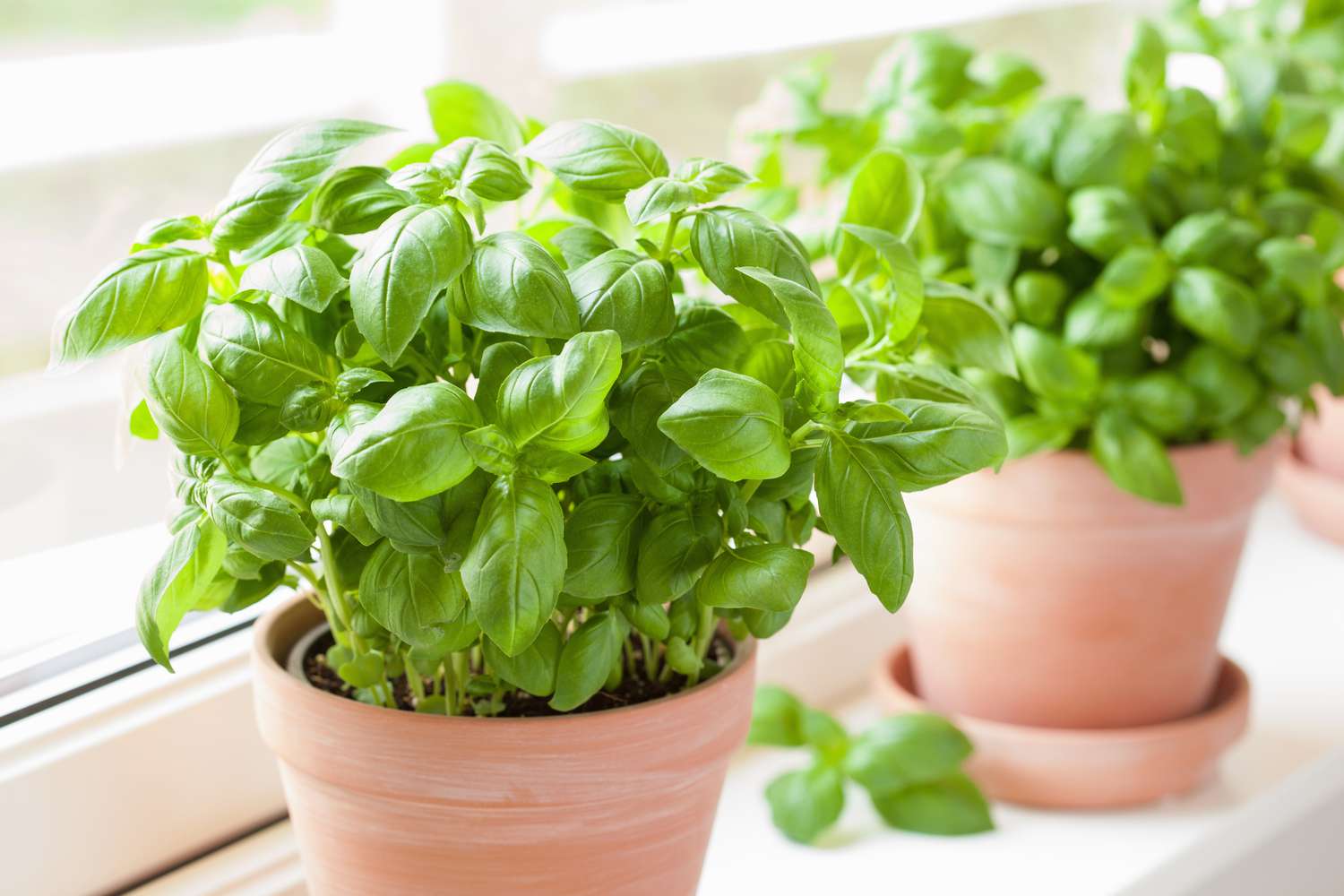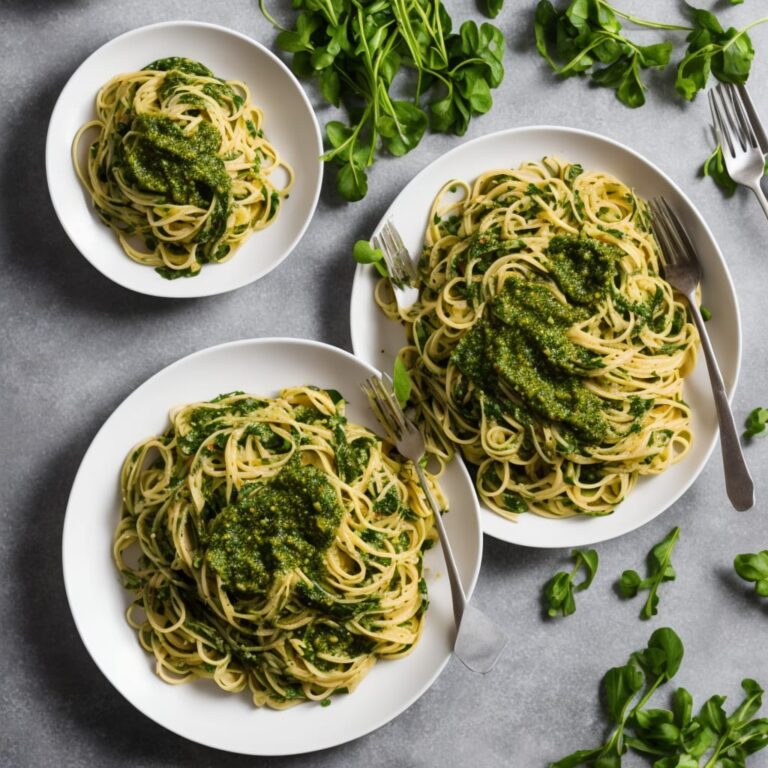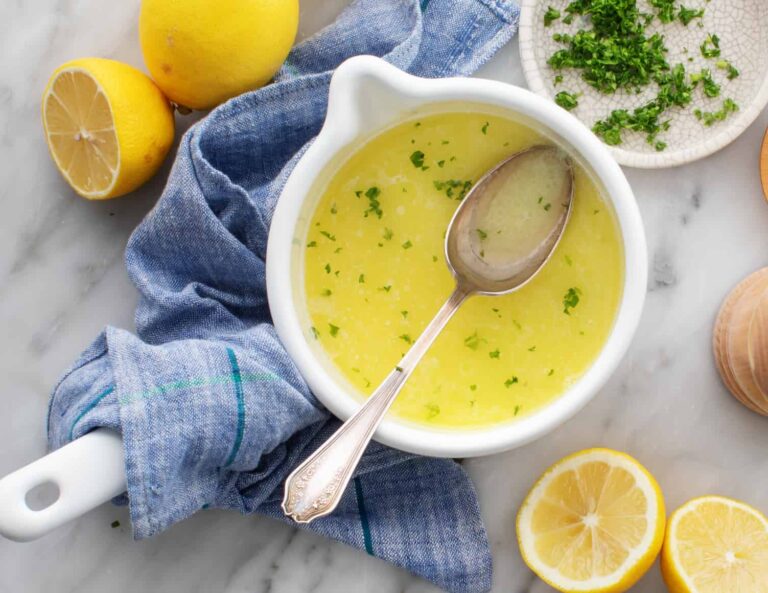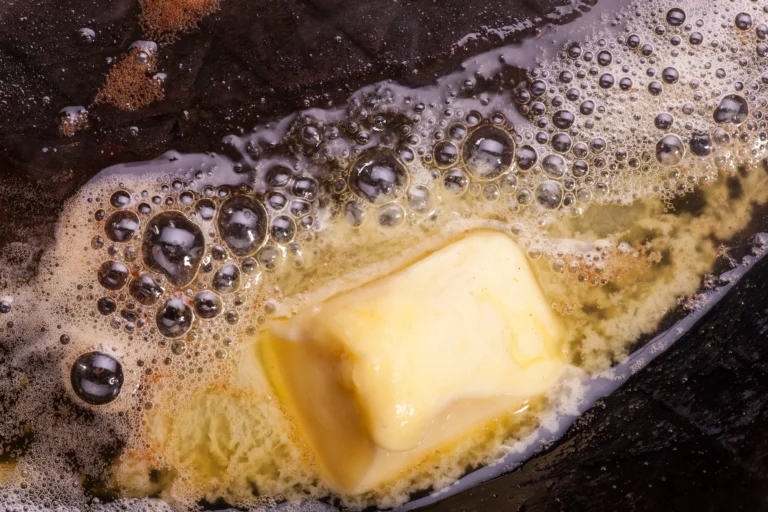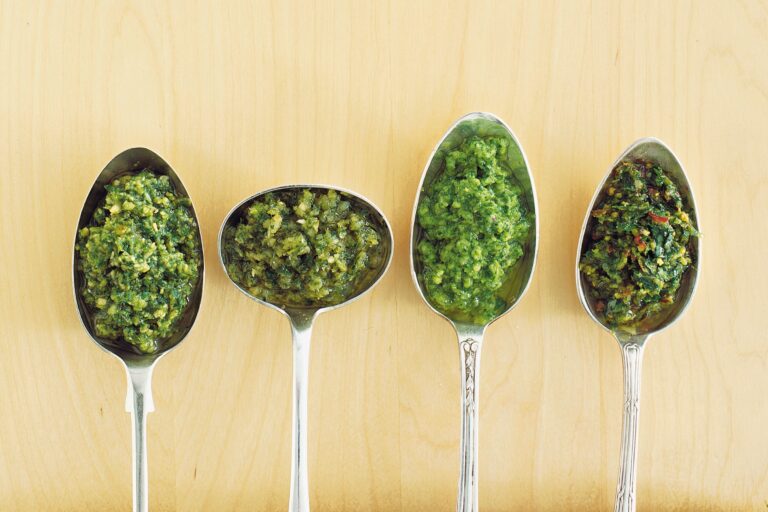Basil, often referred to as the “King of Herbs,” holds a revered place in kitchens and gardens worldwide. With its aromatic leaves and rich flavor, basil is indispensable in many culinary traditions. This versatile herb not only enhances dishes but also boasts an impressive array of varieties and benefits.
In this comprehensive guide, we will explore the different types of basil, provide tips for growing it at home, and share insights from the expertise of JL Surjan.
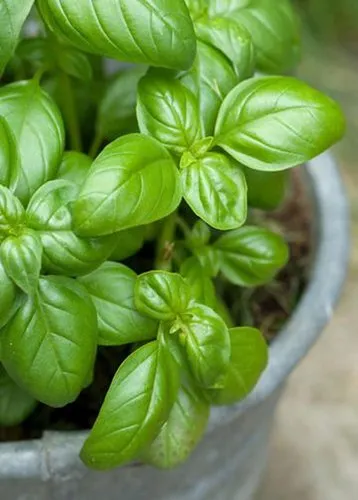
Varieties of Basil
Basil comes in numerous varieties, each with unique characteristics and flavors. Understanding these differences can help you choose the right type for your culinary and gardening needs.
Sweet Basil
Sweet basil is the most common variety and is often used in Italian cuisine. It has large, bright green leaves and a sweet, slightly peppery flavor. This type of basil is the main ingredient in classic pesto sauce and pairs well with tomatoes, making it a staple in Caprese salads and pasta dishes.
Thai Basil
Thai basil is a variety that features purple stems and small, pointed leaves. It has a distinct licorice or anise flavor, which makes it a key ingredient in Southeast Asian cuisine, particularly in Thai and Vietnamese dishes. Its robust flavor holds up well to cooking, making it perfect for stir-fries and soups.
Lemon Basil
Lemon basil offers a delightful citrusy aroma and flavor. The leaves are smaller and narrower than sweet basil, with a bright green color. This variety is excellent for adding a fresh, tangy twist to salads, seafood dishes, and desserts. It’s also great for infusing water and teas.
Genovese Basil
Genovese basil is a prized variety known for its large, tender leaves and sweet flavor. It is often considered the best basil for making traditional Italian pesto. The leaves have a smooth texture, and the plant itself is relatively compact, making it ideal for both garden beds and containers.
Holy Basil
Holy basil, also known as Tulsi, holds significant spiritual and medicinal value in Hindu culture. It has a spicy, clove-like flavor and is often used in herbal teas and remedies. Holy basil is believed to have numerous health benefits, including stress relief and immune system support.
Purple Basil
Purple basil stands out with its vibrant purple leaves and stems. It has a slightly spicier flavor compared to sweet basil and is often used as a decorative element in dishes. Purple basil’s striking color makes it a beautiful addition to salads, garnishes, and infused vinegars.
Cinnamon Basil
Cinnamon basil has a warm, spicy aroma reminiscent of cinnamon. It features green leaves with reddish-purple veins and small, purple flowers. This variety is perfect for adding a unique flavor to baked goods, fruit dishes, and beverages like mulled wine or spiced tea.
Greek Basil
Greek basil is a compact variety with small, aromatic leaves. It has a mild, sweet flavor and is often used in Mediterranean cuisine. Its bushy growth habit makes it an excellent choice for container gardening and small spaces.
Spicy Globe Basil
Spicy Globe basil is a dwarf variety that forms a small, bushy plant. It has tiny, aromatic leaves and a spicy flavor that is more intense than sweet basil. This variety is ideal for growing in pots and can be easily trimmed to maintain its shape.
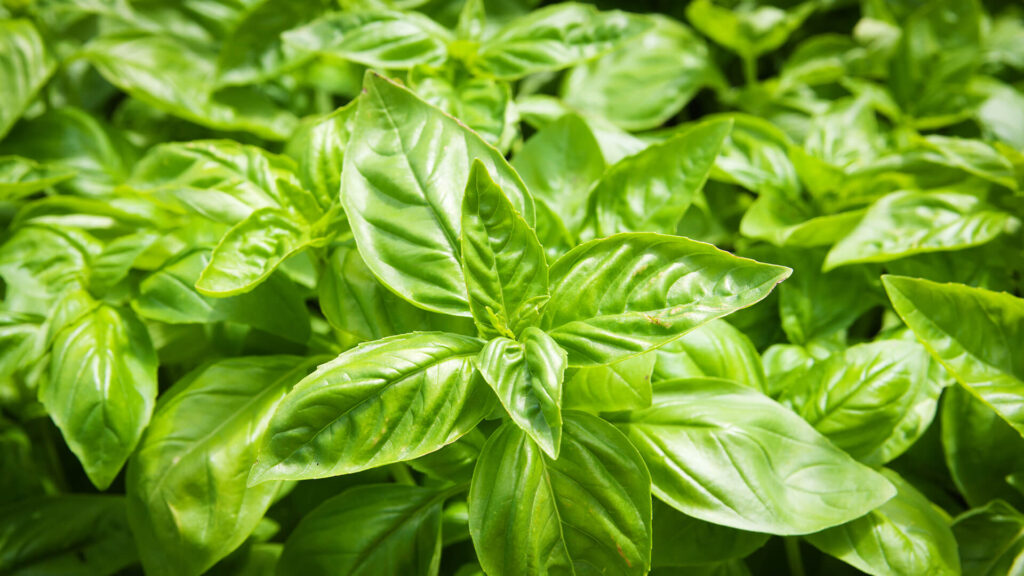

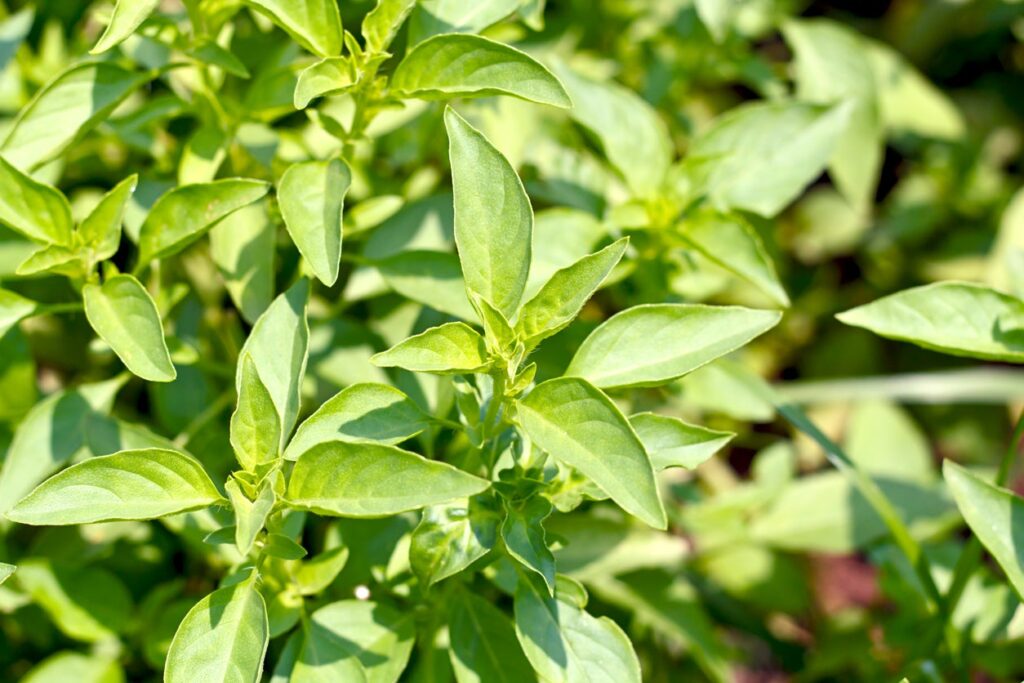
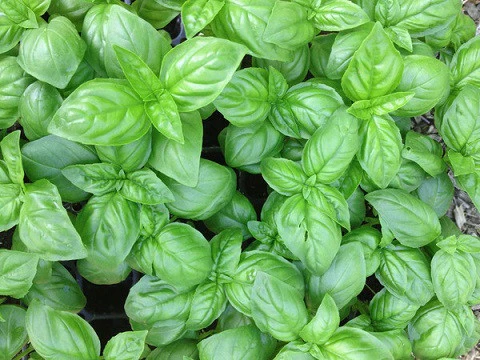
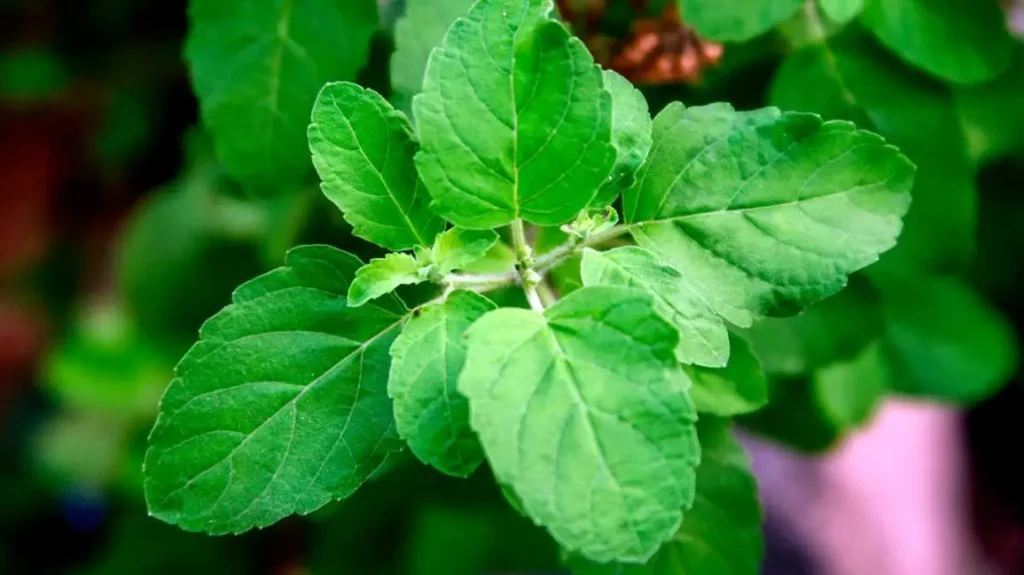
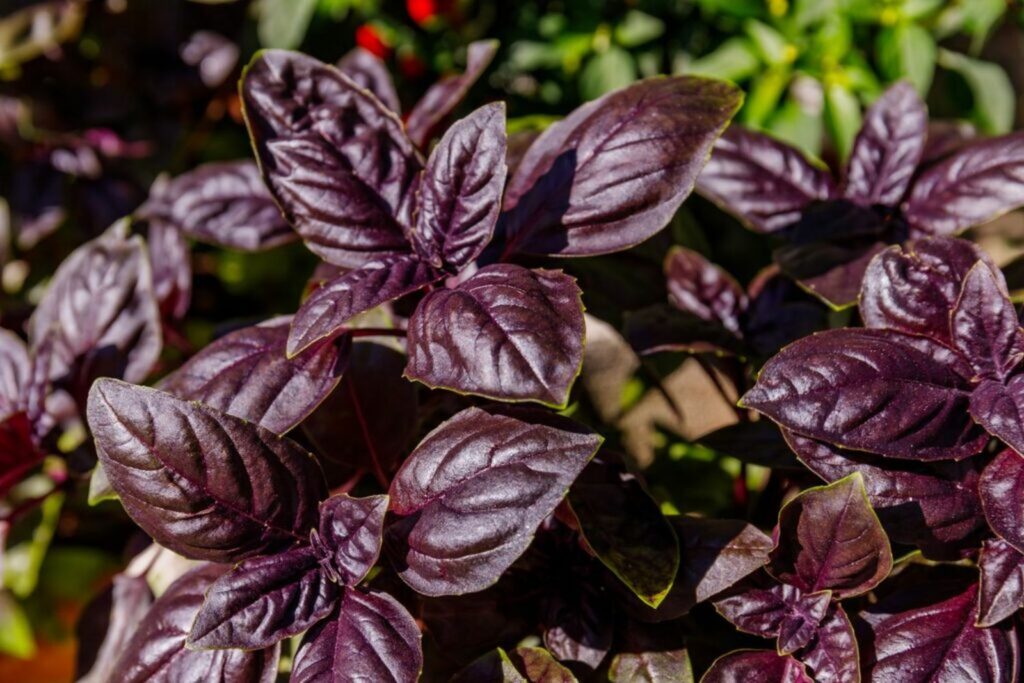
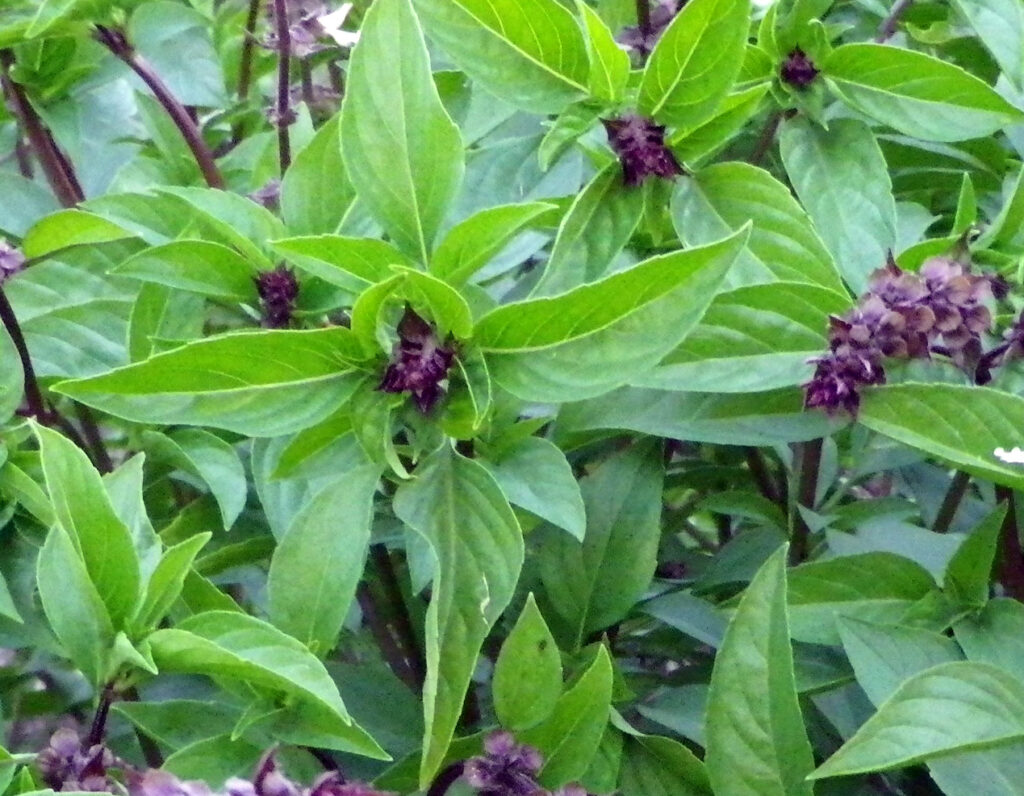
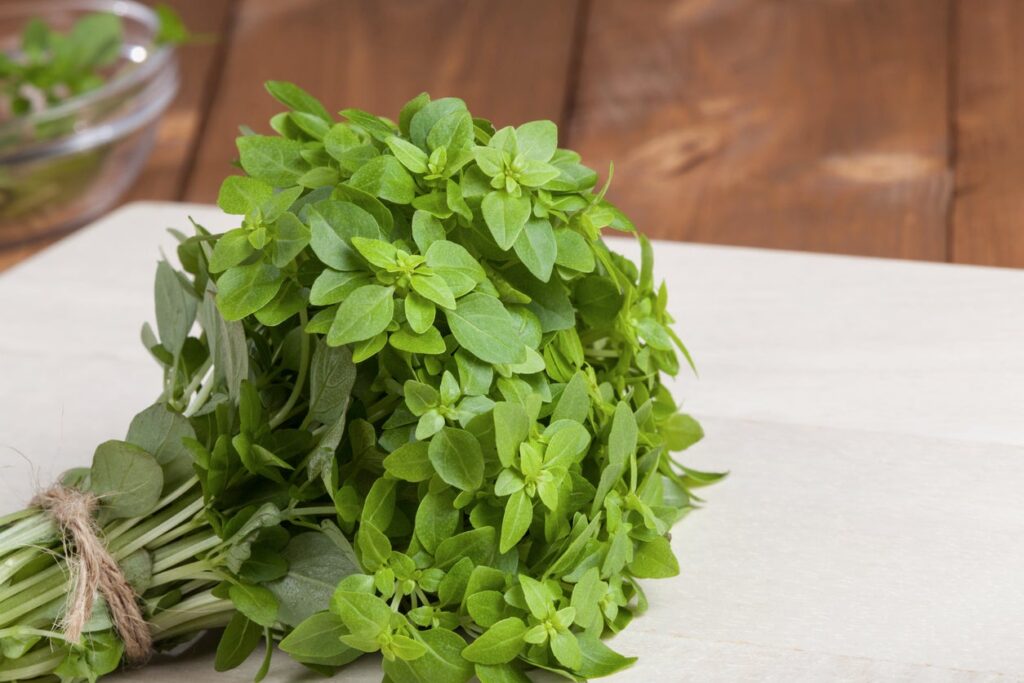
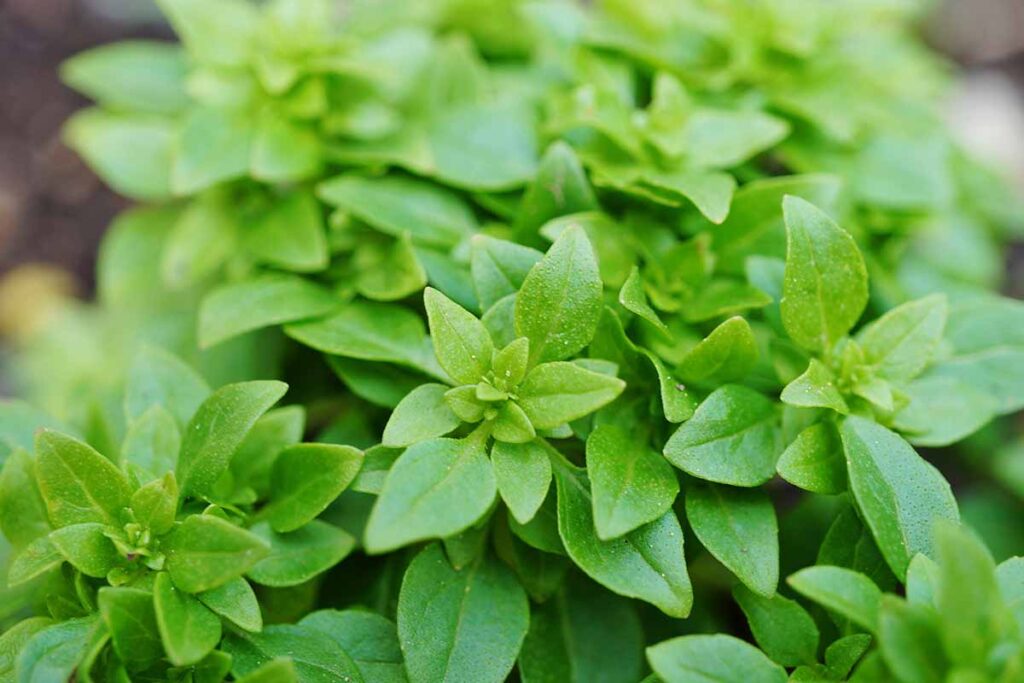
Growing Basil at Home
Growing basil at home is a rewarding experience that ensures you have a fresh supply of this wonderful herb year-round. Whether you have a garden or just a small windowsill, basil can thrive with the right care and attention.
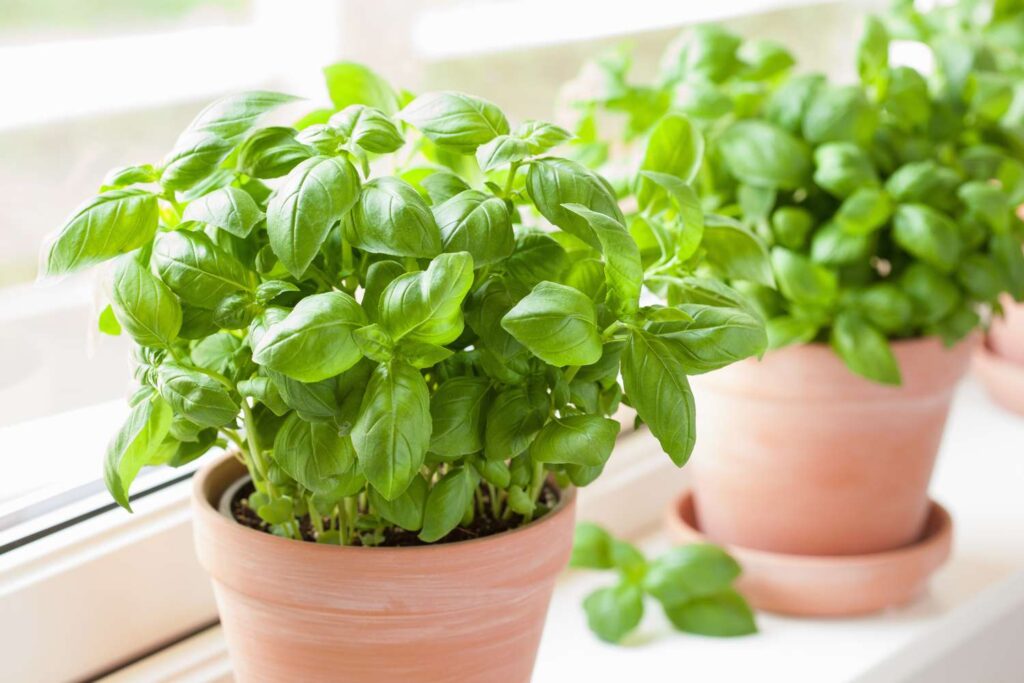
Planting Tips
To start growing basil, you’ll need a sunny spot that receives at least six hours of sunlight daily. Basil can be grown from seeds or seedlings. If planting seeds, sow them about 1/4 inch deep in well-draining soil. Keep the soil consistently moist until the seeds germinate, which typically takes about 5-10 days. Once the seedlings are about 2-3 inches tall, they can be transplanted to their final location, whether it’s a garden bed or a container.
Choosing the right container is crucial for container gardening. Opt for a pot that is at least 6-8 inches deep with drainage holes to prevent waterlogging. Fill the container with high-quality potting mix and ensure it is placed in a location that gets ample sunlight.
Care and Maintenance
Basil requires regular watering, especially during hot weather. However, avoid waterlogging the soil, as this can lead to root rot. Mulching around the base of the plants can help retain moisture and reduce weed growth.
Pruning is essential for promoting bushier growth and preventing the plant from flowering too early. Pinch off the tips of the stems regularly, especially before the plant starts to flower. This encourages the basil to produce more leaves and extends its harvesting period.
Feeding your basil with a balanced, organic fertilizer every 4-6 weeks will ensure it has the necessary nutrients to thrive. Be mindful of pests such as aphids and slugs, which can damage the leaves. Natural pest control methods, such as neem oil or introducing beneficial insects like ladybugs, can help keep these pests at bay.
Indoor basil plants can benefit from occasional misting to increase humidity, especially in dry climates. If growing basil outdoors, consider companion planting with tomatoes, peppers, and marigolds to enhance growth and deter pests.
Harvesting and Storage
Harvesting basil correctly is key to maintaining a healthy plant and ensuring a continuous supply of fresh leaves. Start by picking the leaves from the top of the plant, which encourages bushier growth. Always leave at least a third of the plant intact to allow for regrowth.
For immediate use, basil leaves can be stored in a glass of water on the kitchen counter, similar to a bouquet of flowers. For longer storage, consider freezing or drying the leaves. To freeze basil, blanch the leaves in boiling water for a few seconds, then transfer them to an ice bath. Pat dry and freeze in an airtight container. Dried basil can be made by hanging small bunches upside down in a dark, well-ventilated area until completely dry. Once dried, store the leaves in an airtight container away from direct sunlight.
Common Problems and Solutions
Despite its relative ease of growth, basil can encounter some common issues. Yellowing leaves often indicate overwatering or poor drainage. Ensure that your basil is planted in well-draining soil and adjust your watering schedule accordingly.
Powdery mildew, a fungal disease, can affect basil, especially in humid conditions. To prevent this, water the base of the plant rather than the leaves and provide adequate spacing for air circulation. If powdery mildew does appear, remove the affected leaves and treat the plant with a natural fungicide.
Another issue to watch for is basil downy mildew, which manifests as yellowing leaves with fuzzy, grayish spores on the undersides. This disease is more challenging to manage, but improving air circulation and avoiding overhead watering can help reduce its spread.
Growing basil at home not only provides a fresh supply for your culinary creations but also adds a pleasant fragrance and greenery to your space. With these tips, you’ll be well on your way to enjoying the many benefits of this remarkable herb.
Using Basil in Cooking
Basil’s versatility extends far beyond its traditional uses. Experimenting with different varieties can elevate your dishes and introduce new flavors to your culinary repertoire.
Classic Italian Dishes
Basil is a cornerstone of Italian cuisine, featuring prominently in dishes like pesto, Caprese salad, and Margherita pizza.
Sun-Dried Tomato Pesto Pasta Recipe
To make a classic pesto, blend fresh basil leaves with pine nuts, garlic, Parmesan cheese, and olive oil. This vibrant sauce can be used on pasta, as a spread for sandwiches, or as a dip for vegetables.
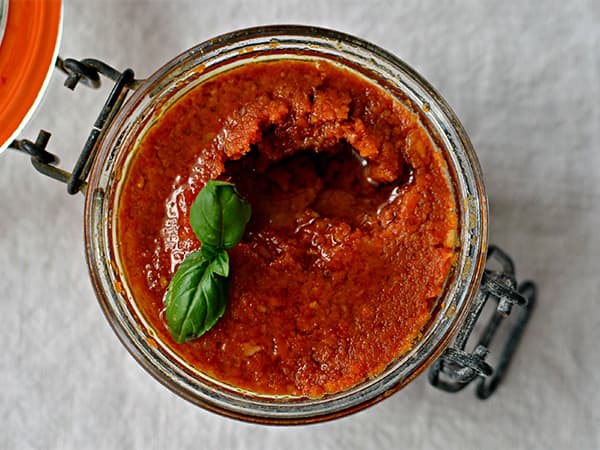
Ingredients:
- 2 cups of fresh basil leaves
- 1 cup sun-dried tomatoes (packed in oil, drained)
- 1/2 cup grated Parmesan cheese
- 1/2 cup pine nuts or walnuts
- 3 cloves garlic
- 1/2 cup olive oil
- Salt and pepper to taste
- 1 pound pasta (your choice, but penne or fusilli work great)
Instructions:
- Prep the Basil: Start by washing and drying the basil leaves. Fresh basil is the star, so make sure it’s vibrant and fragrant.
- Make the Pesto: In a food processor, combine the sun-dried tomatoes, basil leaves, Parmesan cheese, pine nuts (or walnuts), and garlic. Pulse until the ingredients are finely chopped.
- Add the Oil: While the food processor is running, slowly add the olive oil until the mixture is smooth and creamy. If it’s too thick, you can add a little more oil or a splash of water. Season with salt and pepper to taste.
- Cook the Pasta: Cook your pasta according to the package instructions. Make sure it’s al dente so it can hold up to the hearty pesto.
- Combine: Drain the pasta, reserving a cup of the pasta water. Toss the pasta with the pesto, adding the reserved pasta water a little at a time to help the sauce coat the pasta evenly.
- Serve: Serve immediately, garnished with a few fresh basil leaves and an extra sprinkle of Parmesan if you’re feeling fancy.
Why Basil Works
In this dish, basil does more than just add color. Its fresh, slightly sweet, and peppery flavor complements the rich, tangy sun-dried tomatoes perfectly. The aromatic oils in basil also help to cut through the richness of the olive oil and cheese, creating a balanced, mouthwatering pesto that clings to each piece of pasta.
Caprese salad is another simple yet delicious way to showcase basil. Layer slices of ripe tomatoes, fresh mozzarella, and basil leaves, then drizzle with olive oil and balsamic vinegar. Sprinkle with salt and pepper to taste.
Asian-Inspired Recipes
Thai basil’s unique flavor is perfect for Asian dishes. Add it to Thai green curry, stir-fries, or Vietnamese pho for an authentic taste. Thai basil can withstand higher cooking temperatures without losing its flavor, making it ideal for hot dishes.
Refreshing Beverages
Basil can also be used to create refreshing beverages. Muddle basil leaves with lime juice and sugar to make a basil limeade, or infuse water with lemon basil for a fragrant, hydrating drink. Basil can even be used in cocktails, such as a basil gin smash or a basil margarita.
Desserts and Sweets
Lemon basil and cinnamon basil are excellent choices for adding a unique twist to desserts. Lemon basil pairs well with fruit salads, sorbets, and baked goods, while cinnamon basil can be used in spiced cakes, cookies, and homemade ice cream.
Herbal Teas
Holy basil, known for its medicinal properties, is often used to make herbal tea. Simply steep fresh or dried holy basil leaves in hot water for a soothing, aromatic tea. Adding a touch of honey enhances the flavor and provides additional health benefits.
Health Benefits of Basil
Basil is not only a culinary delight but also offers a range of health benefits. Rich in vitamins and minerals, basil can contribute to overall well-being when included in a balanced diet.
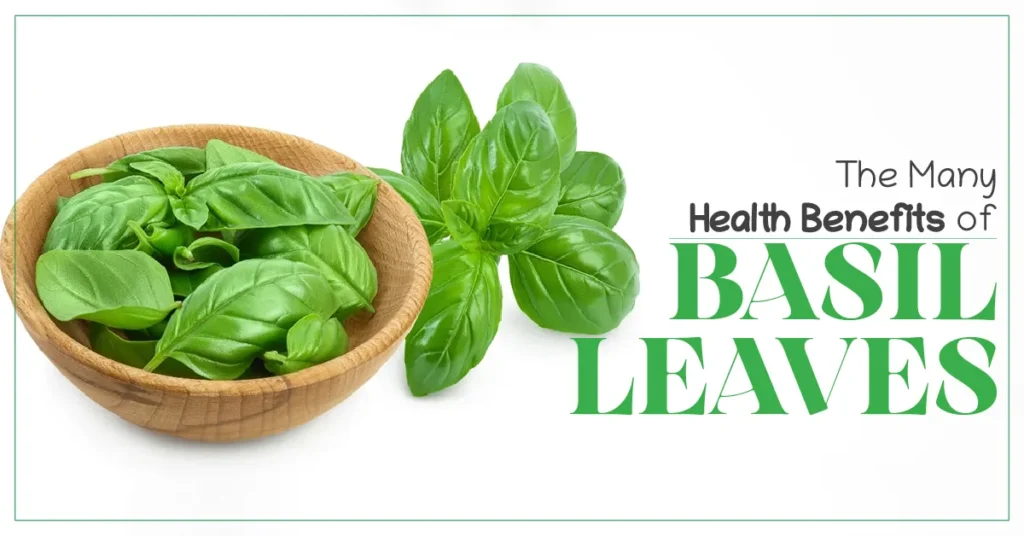
- Nutrient-Rich Basil is a good source of vitamins A, K, and C, as well as essential minerals like calcium, magnesium, and iron. These nutrients support various bodily functions, including bone health, immune function, and blood clotting.
- Antioxidant Properties Basil contains potent antioxidants, such as flavonoids and polyphenols, which help protect the body against oxidative stress and reduce the risk of chronic diseases. These antioxidants also support skin health and can help combat the signs of aging.
- Anti-Inflammatory Effects The essential oils in basil, particularly eugenol, linalool, and citronellol, have anti-inflammatory properties. Regular consumption of basil may help reduce inflammation in the body, which is beneficial for conditions like arthritis and inflammatory bowel disease.
- Stress Reduction Holy basil, or Tulsi, is renowned for its adaptogenic properties, which help the body adapt to stress and promote mental clarity. Consuming holy basil tea or supplements can support stress management and improve overall mental well-being.
- Digestive Health Basil can aid in digestion by stimulating appetite and promoting the production of digestive enzymes. Its anti-inflammatory properties also help soothe the digestive tract and alleviate symptoms of indigestion and bloating.
- Antibacterial and Antimicrobial Basil’s essential oils have antibacterial and antimicrobial properties, making it effective against a range of bacteria and fungi. This makes basil a useful herb for maintaining oral health and preventing infections.
FAQs
Conclusion
Basil, truly the king of herbs, offers a world of flavors and benefits. From the classic sweet basil to the exotic Thai basil and refreshing lemon basil, each variety brings something unique to the table. By growing basil at home, you can ensure a fresh supply of this versatile herb for your culinary adventures. With proper care and maintenance, basil can thrive in your garden or windowsill, providing you with aromatic leaves and delightful flavors all year round.
Disclosure: Our blog contains affiliate links to products. We may receive a commission for purchases made through these links. However, this does not impact our reviews and comparisons. We try our best to keep things fair and balanced, in order to help you make the best choice for you.

